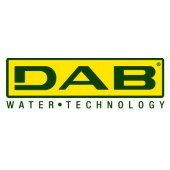Maintaining pumps with artificial intelligence
 According to a report published by a field service software developer, 53% of all machinery downtime is caused by hidden internal faults that maintenance engineers didn’t spot. Trenton Roncato Juraszek, Application Engineer at the motors and drives specialist WEG, explains why machine learning and artificial intelligence support better maintenance and improved overall equipment effectiveness.
According to a report published by a field service software developer, 53% of all machinery downtime is caused by hidden internal faults that maintenance engineers didn’t spot. Trenton Roncato Juraszek, Application Engineer at the motors and drives specialist WEG, explains why machine learning and artificial intelligence support better maintenance and improved overall equipment effectiveness.
The report into the cost of machine downtime also found that production interruptions cost UK manufacturers £180 billion per year. Pump systems aren’t exempt from this. Indeed, they require costly maintenance more than other plant equipment, like IT systems, because they are so frequently exposed to the corrosive effects of water and deteriorate more quickly.
That’s why pump managers must have an effective plant maintenance strategy in place, whether corrective, preventive or predictive. Fortunately, industrial software is playing an increasingly useful role in helping manufacturers manage and analyse data more effectively. New and legacy systems can be integrated into a software platform that links directly to plant equipment through Industry 4.0 sensors, installed at the device level, for overall system improvements.
Moreover, a new trend is emerging within industry software development: the rapid hard tech emergence. Suppliers of motors and drives that previously focussed only on hard technologies, like electric motors, soft starters and other equipment, are moving into developing software too. This accompanies a general rise in patent applications for artificial intelligence (AI), machine learning (ML) and Internet of Things (IoT) platforms in recent decades – averaging five patents per year in the 1990s, which rose to 107 per year between 2010-2019.
This rapid hard tech emergence is significant because software can instead be developed and programmed by engineers with hands-on experience rather than subcontracting these developments to IT companies. Examples include the WEG Motion Fleet Management platform that, combined with WEG Motor Scan sensors linked to motors and drives, makes it possible to evaluate the frequency and duration of problems and source their origin to support predictive maintenance.
But, there’s another advantage here. A sensor that might have been used to monitor a drive or motor can also be retrofitted to other equipment – including pumps. Going forward, as sensors, software and firmware become more flexible, it’s possible to create a pump specialist monitoring platform, to ensure pump systems benefit from better, Industry 4.0-equipped preventive maintenance strategies.
REAL-TIME INSIGHTS
AI and ML are changing the way industry performs maintenance. These Industry 4.0 technologies are not only used in logistics and control or supply chain management, they can also support statistics and analytics in ways that greatly benefit overall equipment effectiveness (OEE) and total cost of ownership (TCO) – but how?
To answer this, we should look at the disadvantages of manual maintenance. As mentioned, 53% of all machinery downtime is caused by hidden internal faults that human engineers can’t spot. TCO also suffers due to companies wasting time and money by monitoring assets manually and then applying reactive corrective maintenance, instead of predictive maintenance through online monitoring. By spending too much money on problem corrections, companies reduce their capacity for new investments.
Fortunately, Industry 4.0 solutions like sensors and software are becoming more accessible to businesses, driven by technological advancements and falling costs. Indeed, the global industrial automation control market size is projected to reach $196,700 million by 2028, from $126,800 million in 2021, a compound annual growth rate (CAGR) of 6.4%. This accessibility also extends to managers of pump systems.
MONITORING PUMPS WITH AI
Let’s look at how a specialised pump monitoring platform would work. For industrial motors, WEG Motion Fleet Management software and WEG Motor Scan sensors can apply 3D vibrational analysis to estimate the energy consumption and load a motor is carrying. Both historical and real-time data are gathered by the sensors and software and relayed to the plant’s supervisory control and data acquisition (SCADA) and manufacturing execution systems (MES). Through AI and ML, this data can be used to automatically adjust and optimise the performance of the motor.
In this scenario, OEE and sustainability are closely connected. As a result, it becomes possible to analyse the forecasted deterioration of equipment and advise on predictive maintenance requirements.
The same technologies can also be used to directly monitor other electric-driven equipment such as pumps, compressors, fans and gearboxes. Let’s use dosing pump systems as an example, which inject a precise flow rate and volume of liquid – chemical or a product – into a tank, pipeline or production line. Pre-Industry 4.0 pump systems do have fault-logging systems, but these are usually managed according to a planned maintenance strategy.
That means assets are replaced and maintained according to a predetermined schedule, with the risk that faults can worsen inbetween maintenance checks. In other cases, the system might not be regularly checked, let alone actioned, leading to a reactive maintenance approach where faults aren’t addressed until it’s too late.
For WEG’s specialised pump monitoring platform, Industry 4.0 sensors attach to pumps themselves, and provide fast and accurate data collection at the device level, and relay this information to an MES and other systems. This data can be processed with software, which generates valuable real-time insights to share with plant managers and engineers.
The sensors can continually harvest data while the pumps are in operation. This data concerns a variety of performance parameters, including cycle status, vibration monitoring and chemical consumption. Both historical and real-time data that can be relayed to the plant’s SCADA and MES.
As a result, operators can access the data 24/7 to make immediate and informed decisions relating to system performance. Their decision might relate to changing pump operating modes such as manual, batch and timed, or making instant efficiency improvements. To make the most of these technologies, data must be presented in an intuitive way. WEG’s platform includes indicators, graphics and a history of measured data to allow for easy-to-understand analysis.
A significant advantage of Industry 4.0 sensors is they enable real-time adjustments, so preventative maintenance becomes possible. Defects can be immediately identified, and maintenance planned to be performed outside normal operating hours, when disruptions will be minimised.
These technologies and processes make it possible to significantly reduce unplanned downtime and costs. Moreover, this tech will benefit manufacturers’ preventative maintenance strategies and OEE and therefore manufacturing sustainability. Retrofitting assets with smart sensors will prove crucial.
There are around 6,500 WEG Motor sensors installed on industrial equipment around the globe. The firmware is flexible, and the pending version two will be released to the industrial market as being a flexible solution for basically any industrial scenario. WEG’s goal is to integrate its digital portfolio into every customer’s MES. In effect, the flexible software will be key to centralising all the information a manager would like to know.

Back to Latest News


1.png&w=170&h=170)






2.jpg&w=170&h=170)

3.png&w=170&h=170)